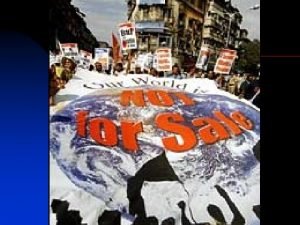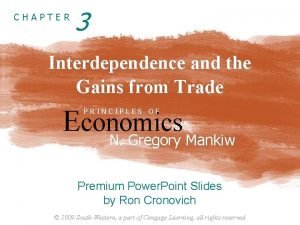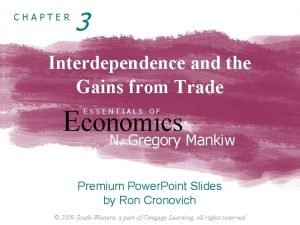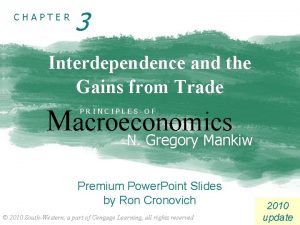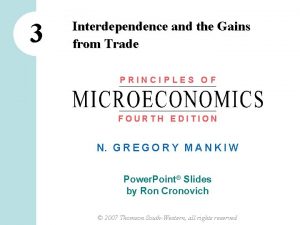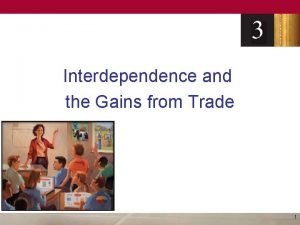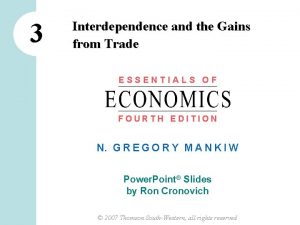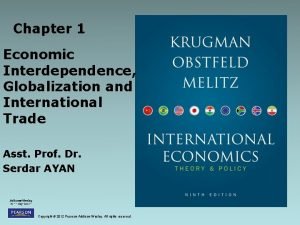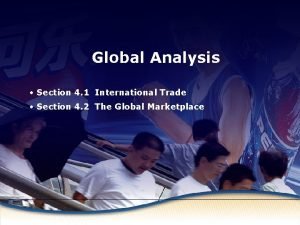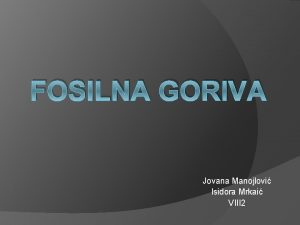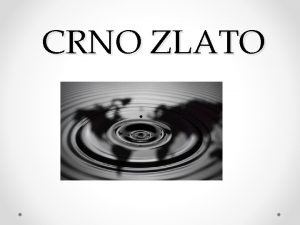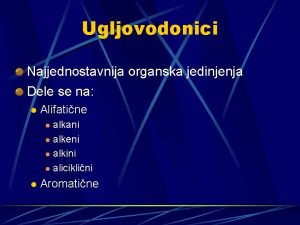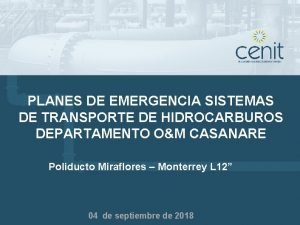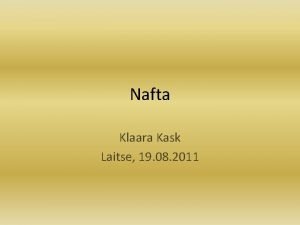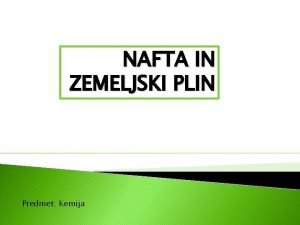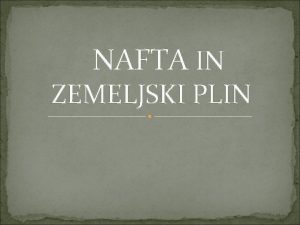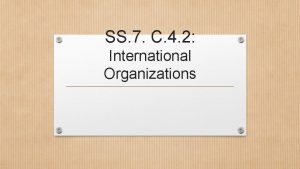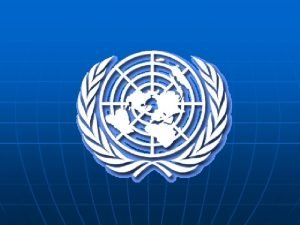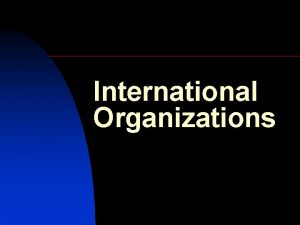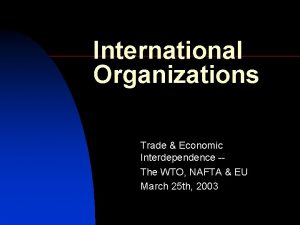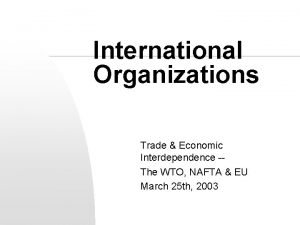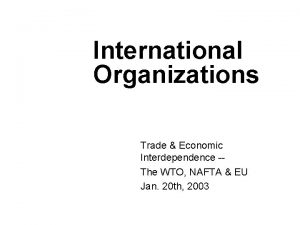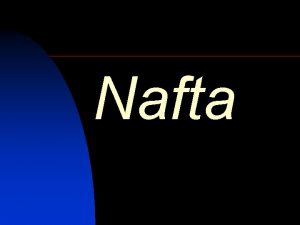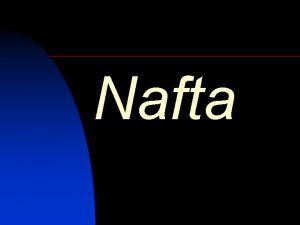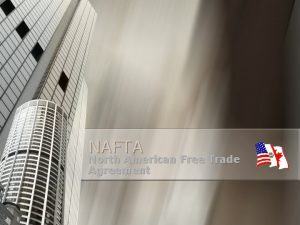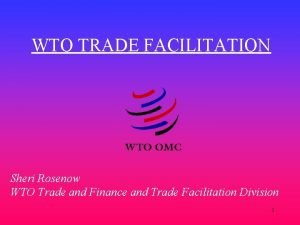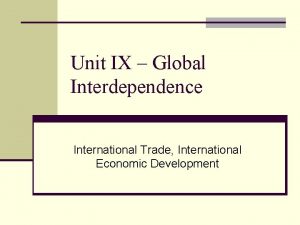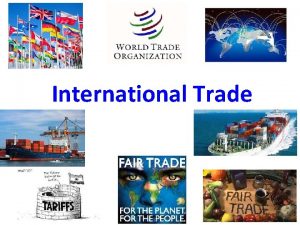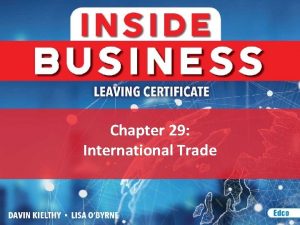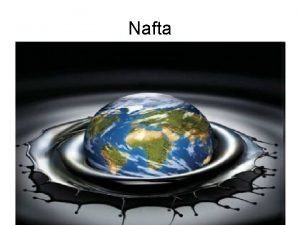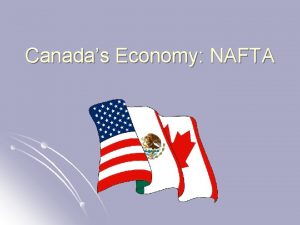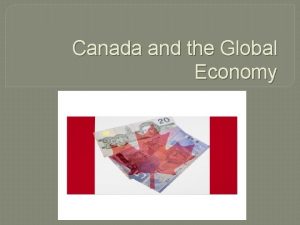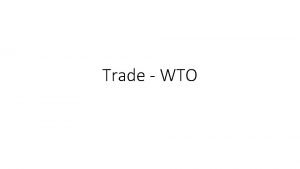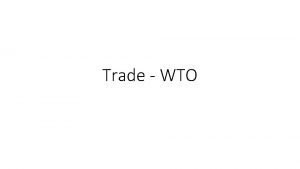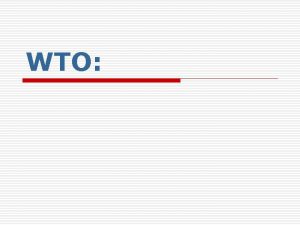International Organizations Trade Economic Interdependence The WTO NAFTA
























- Slides: 24


International Organizations Trade & Economic Interdependence -The WTO, NAFTA & EU (Cont’d) Jan. 22 nd, 2003

The World Trade Organization n Canada and the WTO u u http: //www. wto. org/english/tratop_e/dispu_ e/distabase_wto_members 1_e. htm as respondent Canadian Wheat Board (vs. US – expected decision, Feb. 2004) « aircraft subsidies (vs. Brazil) « • March 2003 -- $247 million u as complainant « softwood lumber (vs. US) • http: //www. globeandmail. com/servlet/story/R TGAM. 20040119. wlumberwto 0119/BNStory/ Business/ bio-tech (vs. EU, May 2003) « asbestos (vs. France, 1998) «

The World Trade Organization n n WTO and national sovereignty WTO and the US « http: //www. wto. org/english/tratop_e/t pr_e/tp 226_e. htm n WTO – ongoing negotiations


The World Trade Organization n n WTO and national sovereignty WTO and the US « http: //www. wto. org/english/tratop_e/t pr_e/tp 226_e. htm n WTO – ongoing negotiations u the failure in Cancun

The World Trade Organization n n WTO and national sovereignty WTO and the US « http: //www. wto. org/english/tratop_e/t pr_e/tp 226_e. htm n WTO – ongoing negotiations u n the failure in Cancun WTO and Anti-Globalization Protests


The World Trade Organization n n WTO and national sovereignty WTO and the US « http: //www. wto. org/english/tratop_e/t pr_e/tp 226_e. htm n WTO – ongoing negotiations u n the failure in Cancun WTO and Anti-Globalization Protests u http: //www. nytimes. com/2004/01/20/ international/asia/20 FORU. html

NAFTA – Trade Plus n n North American Free Trade Agreement (NAFTA) similar to principles enshrined under WTO plus. . . u u u investor protection cross-border mobility environment and labour side agreements

NAFTA – Trade Plus n Free Trade Agreement (FTA), 1989 u u Canada and US removal of almost all barriers to flow of goods and services between the two countries reduction of tarrif and non-tariff barriers (e. g. subsidies) « national treatment «

NAFTA – Trade Plus n North American Free Trade Agreement (NAFTA), 1994 u extended FTA to Mexico u limited differences between FTA and NAFTA expanded to include intellectual property, medical services, etc. « border crossing for business people « side agreements « • environment • labour standards « investor protection

NAFTA – Trade Plus n Chpt. 11 on investment u defines expropriation and requires compensation « u corporations act as complainant cases (examples) Ethyl Corporation « Sun Belt Water « Methanex « Metalclad «

NAFTA – Trade Plus n Chpt. 11 on investment u provides rights to foreign investors. . . that are not constitutionally guaranteed to domestic investors in Canada « enshrines property rights that were deliberately left out of the Canadian constitution « u effects on public policy “regulatory chill” « “ratchet effect” « u counter-argument – investor protection is a necessity for deepening economic integration

NAFTA – Where Now? n FTAA – Free Trade Area of the Americas u u expansion of NAFTA to 34 countries http: //www. ftaaalca. org/busfac/clist_e. asp

European Union (EU) – Economic & Political Integration n expansion – deepening and broadening integration u European Coal and Steel Community, 1951 « u European Economic Community (EEC), 1957 « « u six countries (Belgium, France, Germany, Italy, Luxembourg, the Netherlands) negative integration – absence of restrictions on movement of workers, goods, services Denmark, Ireland UK admitted, 1972 European Union, 1993 « positive integration – actively fostering integration • Maastricht Treaty, 1992 • Amsterdam Treaty, 1997 « 15 members currently • Greece (1986), Spain (1986), Portugal (1986), Austria (1995), Finland (1995), Sweden (1995)

European Union (EU) – Economic & Political Integration n 2004 expansion u 10 candidate countries (Bulgaria, Czech Republic, Estonia, Cyprus, Latvia, Lithuania, Hungary, Malta, Poland, Romania, Slovenia, Slovakia, Turkey)


European Union (EU) – Economic Integration n single market u u free movement of people, capital (investment), goods and services customs union « n single set of trade/tariff policies monetary union « the Euro • phased in 1999 -2002 n common labour market « Schengen Agreement, 1985

European Union (EU) – Political Integration n common political institutions u legislative – shared legislative powers • Council of the European Union – ministers and heads of state of member countries • European Parliament – direct election u executive – European Commission President and commissioners appointed by member states « confirmed by European Parliament « u judiciary – Court of Justice

European Union (EU) – Political Integration n n common political institutions common European citizenship u freedom of movements u fundamental rights u civil and political rights common social citizenship (limited) u access to social programs in other countries common currency u money traditionally symbol of sovereignty u requires integrated monetary policy regional development funds u to help correct regional imbalances in wealth within the EU

Main Points! n range of options for integration u economic integration « negative integration (removing barriers to economic integration) • trade (WTO & GATT) • trade plus (NAFTA) « positive integration (actively fostering integration) – common market (EU) u political integration « economic integration only • WTO and NAFTA « economic integration and political integration • EU

Democratic Issues. . . n n n to what degree do democratically elected governments have the right to cede sovereignty in international agreements? to what degree do democratic governments have the right to make decisions that are binding on future governments? what is the required level of citizen engagement? is involvement of democratically elected governments enough? u do international institutions themselves have to be democratic (and what would this mean)? u

 Nafta and wto
Nafta and wto Chapter 3 interdependence and the gains from trade answers
Chapter 3 interdependence and the gains from trade answers Interdependence and the gains from trade chapter 3
Interdependence and the gains from trade chapter 3 Interdependence and the gains from trade
Interdependence and the gains from trade Interdependence and the gains from trade chapter 3
Interdependence and the gains from trade chapter 3 Chapter 3 interdependence and the gains from trade summary
Chapter 3 interdependence and the gains from trade summary Interdependence and the gains from trade
Interdependence and the gains from trade Interdependence and the gains from trade
Interdependence and the gains from trade Economic interdependence pros and cons
Economic interdependence pros and cons Economic interdependence
Economic interdependence Nafta referat
Nafta referat Nafta i zemni gas prezentacija
Nafta i zemni gas prezentacija Crno zlato nafta
Crno zlato nafta Dobijanje alkana
Dobijanje alkana Political geography
Political geography Nafta
Nafta North american free trade agreement
North american free trade agreement Klaara kask
Klaara kask Nafta in zemeljski plin
Nafta in zemeljski plin Nafta in zemeljski plin
Nafta in zemeljski plin Guided notes international organizations
Guided notes international organizations Child welfare services and agencies
Child welfare services and agencies Universal international organizations
Universal international organizations International union of forest research organizations
International union of forest research organizations Universal international organizations
Universal international organizations
